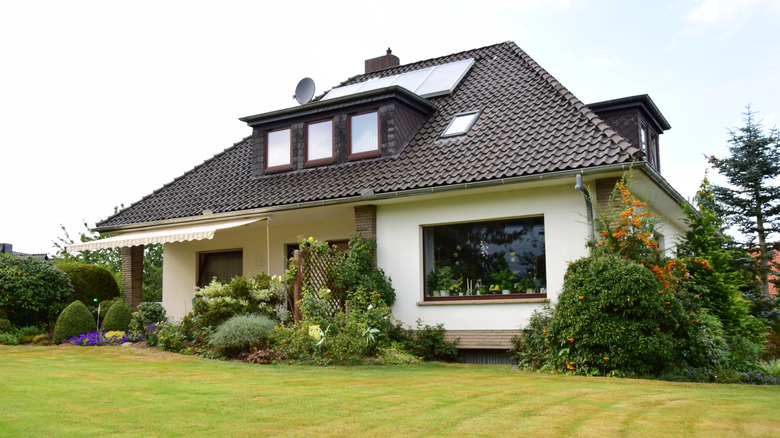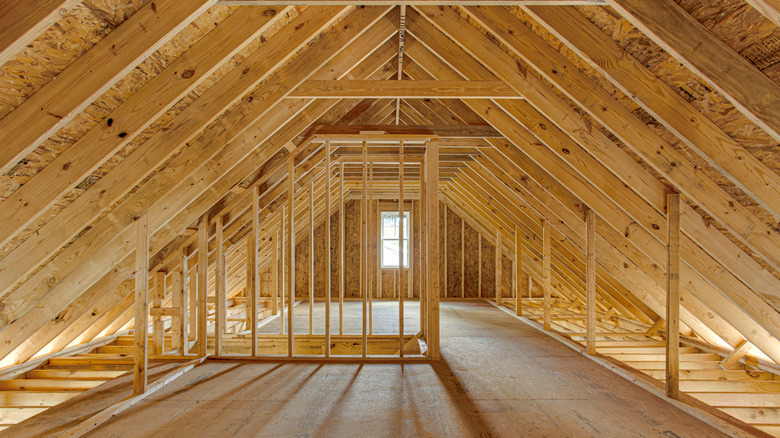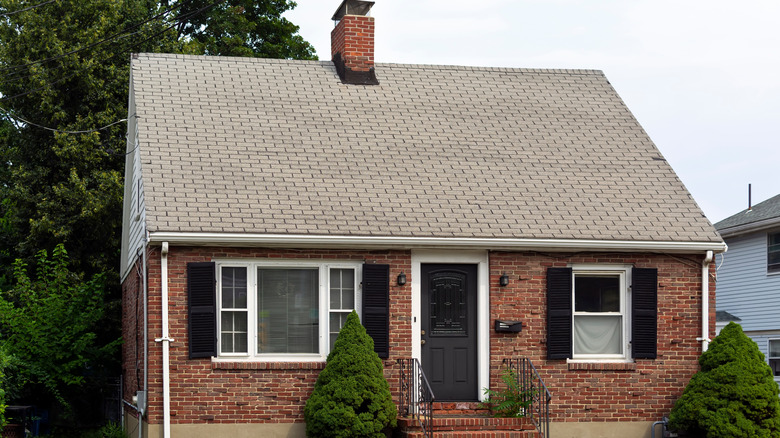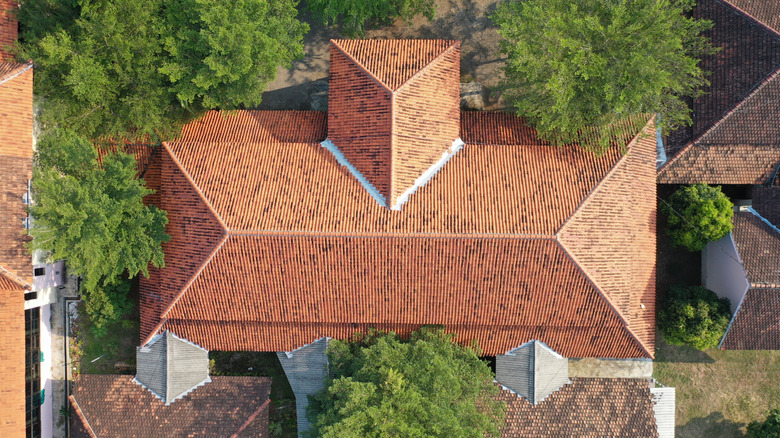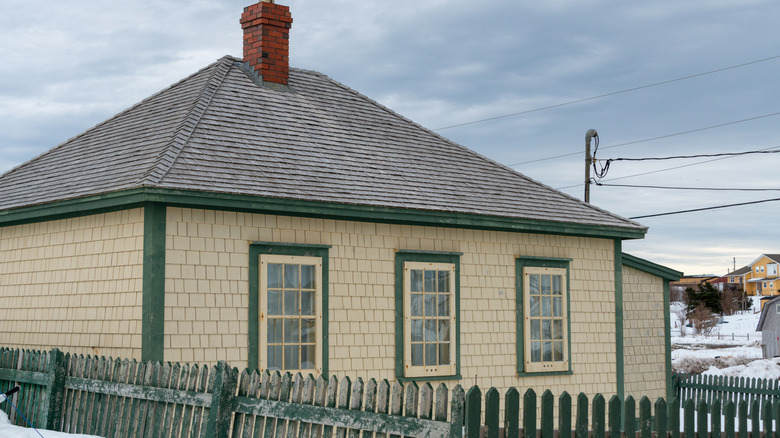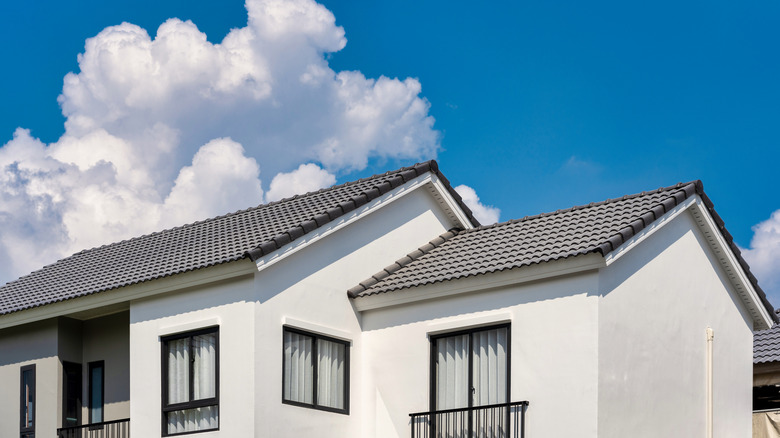Gable Vs Hip Roof: Key Differences Every Homeowner Should Know
Gable and hip roofs are two common styles you'll see on homes, but do you know the difference? The main distinguishing feature is how many sloped roof sections the house has and how the ends are constructed. You might not think much about different types of roofs unless you're building a new home or buying an existing home and want to understand the roof's strengths and weaknesses. Identifying the type of roof your current home has also helps you prepare for potential issues that could arise.
A simple gable roof has two sloping sections, one in the front and one in the back, that meet at the top of the roof to form a ridge the length of the house. On the sides, the exterior walls extend up to the roofline with the walls coming to a point at the top. The triangular wall section on each side is called a gable end. If you look at the roof from the front, you see a large, sloped rectangular roof section. If you look at the side, you see the edges of the two sloped roof sections forming a peak.
Hip roofs use sloping roof sections for all four sides of the home instead of having the higher, peaked exterior walls on the ends. The four roof sections all slope in toward the middle where they typically meet either at a single point or at a horizontal ridge. Both gable and hip roofs have different variations on the basic design. Some homes combine the two roof types or incorporate other roof styles to create a more complex and interesting finished look.
Advantages of gable roofs
If you're considering a gable roof, you're in good company. It's the most common roof type in the U.S. It's usually an affordable roof style because it has just two roof sections, which require fewer shingles and roofing materials. While this design requires more siding material, you'll usually spend less on siding that you would on roofing, so your overall project should cost less. If you stick with a basic gable roof, it's relatively straightforward to build and cover with shingles since the sections are rectangular without lots of smaller or odd-shaped sections.
Inside the home, your attic offers more usable space with a gable roof. Unlike a hip roof where all four sides slope inward, the end walls on a gable roof are completely vertical. Only two walls of the attic are sloped, which gives you more usable space in the center if you want to finish the attic. In an unfinished attic, you have more usable storage areas. The extended wall sections also make it easier to add large windows or ventilation for your attic room.
While hip roofs are typically stronger, gable roofs are often better at shedding snow and water, especially on homes with steeper pitches. This is a major advantage since it helps keep your roof in good condition. It also cuts down on how much maintenance you need to do since debris and snow aren't as likely to get stuck on the roof. The large, rectangular roof sections also make an ideal spot for solar panels, allowing you to install more panels in optimal positions than on a hip roof.
Disadvantages of gable roofs
There are also drawbacks of having a gable roof that you probably haven't considered. Because of the simple design, gable roofs are considered to be boring and lack curb appeal when compared to the look of a hip roof. To some people, the gable area, which is the triangle section of the side wall, lacks interest. One way to deal with that issue is to use a different siding material on the gable to create contrast and make it look more attractive.
Structurally, a gable roof isn't as strong as a hip roof. Gable roofs don't hold up as well to strong winds and large amounts of snow. Large overhangs on gable roofs give strong winds a place to catch and lift upward, potentially pulling the roof away from the walls. Additional bracing may be necessary for the overhangs on gable roofs in high-wind areas. The large, sloped roof sections also take a lot of pressure from wind that hits them directly. In extreme wind, that could cause damage to the roof. If you live in an area with frequent high winds, you could pay more for your homeowner's insurance or miss out on the discounts offered to homeowners with hip roofs.
Advantages of hip roofs
Is a hip roof the right roofing style for your home? Looking at the advantages of hip roofs could help you decide. It's a strong roof type largely due to the self-bracing design where the four sections lean into each other. The design also reduces flat surfaces and larger overhangs where wind can get caught and put upward pressure on the structure. With multiple sloped sections, the roof layout moves wind up and over the roof to reduce stress on the structure. That means it holds up well in areas with rough weather conditions, from high winds to heavy rain. Having a hip roof in an area that's prone to wind damage could earn you a homeowner's insurance discount since the roof has a better chance of surviving strong winds.
Since the bottom edge of the roof is level on all sides, the hip roof makes gutter installation easier and consistent. Many people also prefer the overall look and curb appeal of a hip roof because it has more visual interest. Higher-end homes are more likely to use the hip roof design, which gives the impression that your home is more upscale if it has a hip roof.
Disadvantages of hip roofs
If you opt for a hip roof, you'll spend more money on its construction. This style of roof requires more shingles than a gable roof to cover all of the sections. It also uses a more complex design to ensure the roof is braced properly, which requires advanced building skills and potentially higher labor costs.
The four sloped roof sections and diagonal bracing cut into attic space with a hip roof. It's also difficult to get proper ventilation and windows in an attic space with a hip roof because you don't have the vertical side walls. There are different types of dormers you can add to give your attic extra space and incorporate windows. The sloping design also reduces your ability to add solar panels. You may have half the space for panels as you would with a gable roof.
You also have some structural issues to consider, including the increased risk of leaks because of the additional seams and dormers. Proper installation and maintenance are essential to prevent major water damage on the roof. While hip roofs are strong, some designs make it more difficult for the roof to shed snow in the winter. Gable roofs, on the other hand, often have steeper slopes, allowing snow and water to shed more effectively. Large accumulations of snow on the roof, especially if your home lacks proper insulation, could lead to ice dams and water damage. Because debris and snow tend to stay on a hip roof, you may spend more time performing maintenance to remove unwanted items from the surface.
Gable vs hip roof: Which should you choose?
To pick the best roof for your home, you have several factors to consider, from the type and color of the roofing to the style of roof you choose. If you're deciding between a gable and a hip roof, your main considerations should be the weather elements in your area, your budget, your style preferences, and how you plan to use the attic space. In many cases, either a gable or a hip roof will work on your home. Either way, you'll face some disadvantages. You may have a particular preference or a unique situation that sways you toward one style over the other.
Gable roofs are ideal when you have a smaller budget or want to keep the look simple because the two-slope design is cheaper to construct. You might also lean toward a gable roof if you plan to use the attic space either as a finished room or for storage because of the extra room it offers. It's also a good option if you want to minimize your roof maintenance.
You might choose a hip roof if you have a larger construction budget or want a higher-end look for your home. Hip roofs work well in areas with severe weather since they tend to hold up better, especially against high winds. If you're buying a new home, check with your insurance company to see if they offer discounts for hip roofs.
